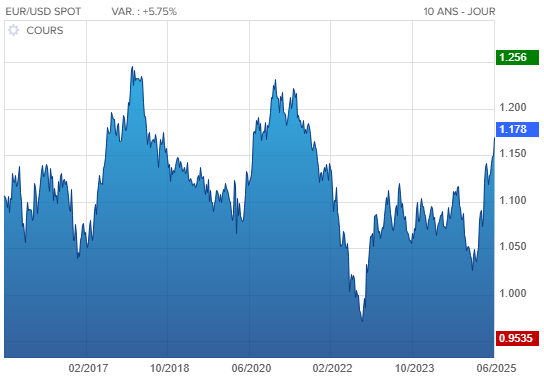Market overview : "Much Ado About Nothing"

The first half of 2025 ended on a positive note, with June bringing several pieces of good news, most notably: easing geopolitical tensions, relief on the tariff front, and renewed hope regarding interest rate cuts.
The first half of 2025 ended on a positive note, with June bringing several pieces of good news, most notably: easing geopolitical tensions, relief on the tariff front, and renewed hope regarding interest rate cuts.

Geopolitics: Calm After the Storm
Following massive U.S. strikes in Iran, calm quickly returned as the United States now seeks to reach an agreement to end Iran’s military program.
The Iranians will likely be forced to negotiate—unless they are willing to risk regime collapse, which could trigger civil war. In this context, a ceasefire has been announced. Uncertainty remains about the actual damage caused by the strikes, but for now, the scenario of a full-scale escalation appears unlikely. Even the potential closure of the Strait of Hormuz is no longer on the table.
Markets understandably reacted positively, anticipating a potential improvement in the region's medium-term stability and a short-term easing of pressure on oil prices: WTI crude fell back to around $65 per barrel after briefly spiking to $75.
Global Economy: Risks Recede
On the tariff front, discussions between Europe and the United States are ongoing and appear to be heading in a constructive direction. The July 9 deadline could even be extended. It seems we are moving toward a limited increase in tariffs—but an increase nonetheless, allowing Trump to claim a win.
In the United States, debates around a potential interest rate cut by the Federal Reserve (Fed) continue. Fed Chairman Jerome Powell highlights inflation risks (currently at 2.7%) and prefers to wait, despite constant pressure from Trump. That said, economic indicators point to slowing U.S. growth: weakening consumer spending and rising jobless claims. These trends suggest the Fed might change course in the coming months (especially with Powell likely to be replaced in May 2026). U.S. interest rates have already declined: the 2-year yield dropped from 4% to 3.7%, and the 10-year from 4.6% to 4.25%.
Markets & Currencies: The Dollar Slides, Risks Forgotten
Taking a step back, this first half of the year was filled with numerous large-scale and often anxiety-inducing events. And yet, the global economy has held up, and major risks have failed to materialize. Much ado about nothing, in a way.
As for equities, the Stoxx Europe 600 ended H1 2025 with a gain of 6.6%, while the U.S. S&P 500 posted a 5.5% increase. However, due to the dollar's 12% depreciation against the euro since the start of the year, a European investor in the S&P 500 would have actually lost money!
Evolution of the euro/dollar exchange rate over the past 10 years:

Indeed, this is the other major takeaway from the first half: the “Dollar Index”—which compares the greenback to a basket of currencies including the euro, yen, pound sterling, Canadian dollar, Swiss franc, and Swedish krona—fell 10.5% over H1 2025. That’s the steepest half-year decline for the dollar since 1973.
This leads us to conclude this monthly note with two key observations:
- When discussing financial investments, never overlook currency risk. Geographic diversification is certainly relevant (and inevitably involves exposure to foreign currencies), but it must be done consciously and in reasonable proportions.
- Speaking of reasonable proportions, appearances can be misleading: an investor seeking broad exposure to equity markets might naturally turn to a global index such as the MSCI World (which includes over 1,500 stocks), without being aware of its composition. Due to the strong performance of U.S. equities over the past decade, their weight in this index had risen to around 70%! This results in significant exposure to dollar movements and limited diversification across other regions (Europe, Japan, Australia…), not to mention the absence of so-called “emerging markets” from this index.
